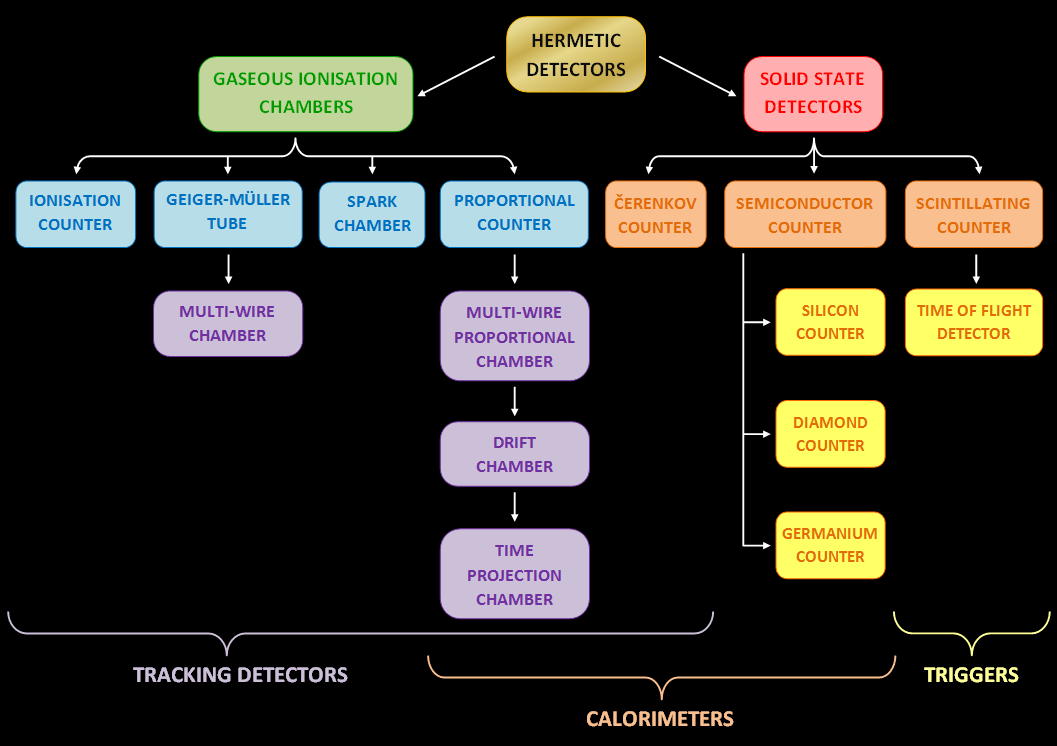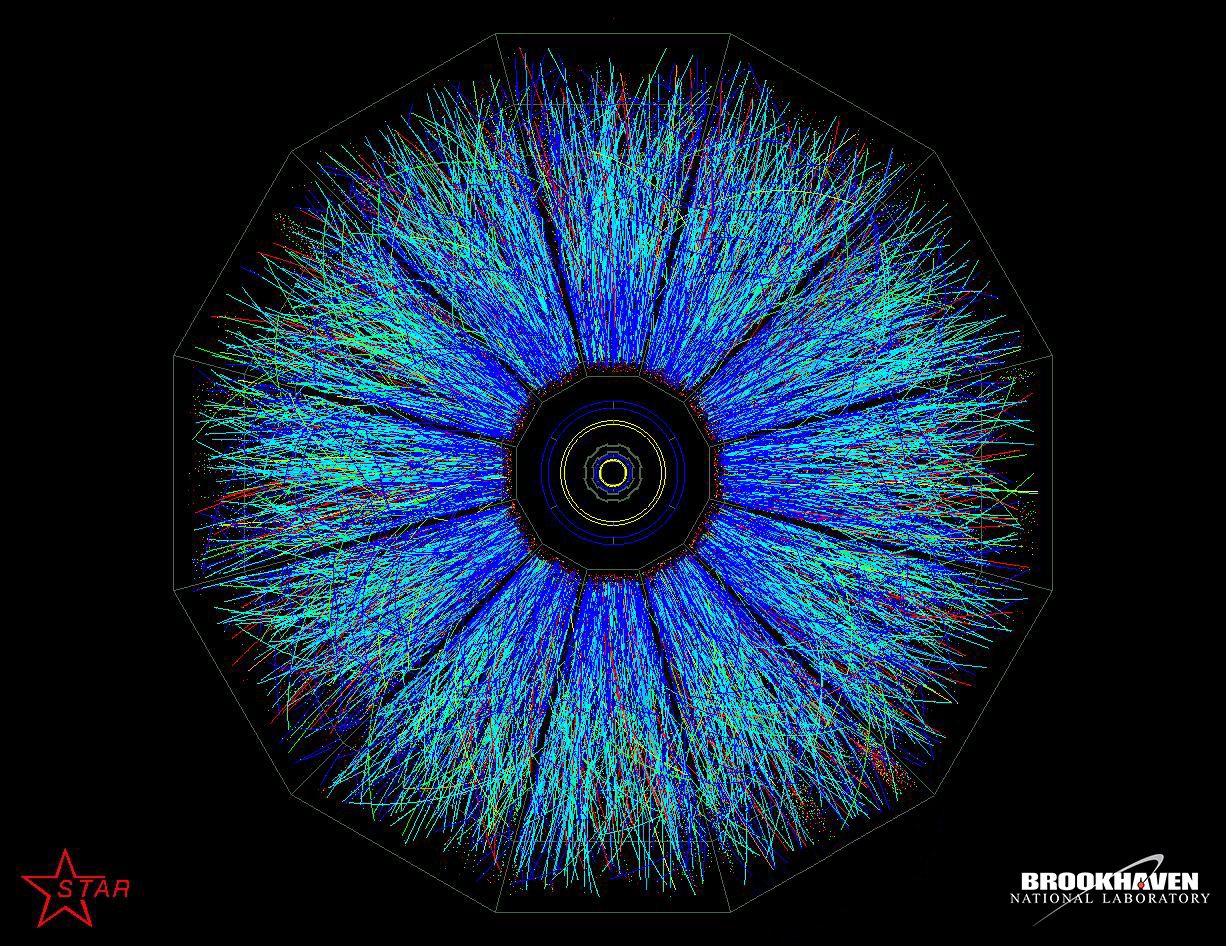|
Interaction Point
In particle physics, an interaction point (IP) is the place where particles collide in an accelerator experiment. The ''nominal'' interaction point is the design position, which may differ from the ''real'' or ''physics'' interaction point, where the particles actually collide. A related, but distinct, concept is the ''primary vertex'': the reconstructed location of an individual particle collision. For fixed target experiments, the interaction point is the point where beam and target interact. For colliders, it is the place where the beams interact. Experiments (detectors) at particle accelerators are built around the nominal interaction points of the accelerators. The whole region around the interaction point (the experimental hall) is called an interaction region. Particle colliders such as LEP, HERA, RHIC, Tevatron and LHC The Large Hadron Collider (LHC) is the world's largest and highest-energy particle accelerator. It was built by the European Organization for ... [...More Info...] [...Related Items...] OR: [Wikipedia] [Google] [Baidu] |
Particle Physics
Particle physics or high-energy physics is the study of Elementary particle, fundamental particles and fundamental interaction, forces that constitute matter and radiation. The field also studies combinations of elementary particles up to the scale of protons and neutrons, while the study of combinations of protons and neutrons is called nuclear physics. The fundamental particles in the universe are classified in the Standard Model as fermions (matter particles) and bosons (force-carrying particles). There are three Generation (particle physics), generations of fermions, although ordinary matter is made only from the first fermion generation. The first generation consists of Up quark, up and down quarks which form protons and neutrons, and electrons and electron neutrinos. The three fundamental interactions known to be mediated by bosons are electromagnetism, the weak interaction, and the strong interaction. Quark, Quarks cannot exist on their own but form hadrons. Hadrons that ... [...More Info...] [...Related Items...] OR: [Wikipedia] [Google] [Baidu] |
Particle Accelerator
A particle accelerator is a machine that uses electromagnetic fields to propel electric charge, charged particles to very high speeds and energies to contain them in well-defined particle beam, beams. Small accelerators are used for fundamental research in particle physics. Accelerators are also used as synchrotron light sources for the study of condensed matter physics. Smaller particle accelerators are used in a wide variety of applications, including particle therapy for oncology, oncological purposes, Isotopes in medicine, radioisotope production for medical diagnostics, Ion implantation, ion implanters for the manufacturing of Semiconductor, semiconductors, and Accelerator mass spectrometry, accelerator mass spectrometers for measurements of rare isotopes such as radiocarbon. Large accelerators include the Relativistic Heavy Ion Collider at Brookhaven National Laboratory in New York, and the largest accelerator, the Large Hadron Collider near Geneva, Switzerland, operated b ... [...More Info...] [...Related Items...] OR: [Wikipedia] [Google] [Baidu] |
Fixed-target Experiment
A fixed-target experiment in particle physics is an experiment in which a beam of accelerated particles is collided with a stationary target. The moving beam (also known as a projectile) consists of charged particles such as electrons or protons and is accelerated to relativistic speed. The fixed target can be a solid block or a liquid or a gaseous medium. These experiments are distinct from the collider-type experiments in which two moving particle beams are accelerated and collided. The famous Rutherford gold foil experiment, performed between 1908 and 1913, was one of the first fixed-target experiments, in which the alpha particles were targeted at a thin gold foil. Explanation The energy involved in a fixed target experiment is 4 times smaller compared to that in collider with the dual beams of same energy. More over in collider experiments energy of two beams is available to produce new particles, while in fixed target case a lot of energy is just expended in giving velociti ... [...More Info...] [...Related Items...] OR: [Wikipedia] [Google] [Baidu] |
Collider
A collider is a type of particle accelerator that brings two opposing particle beams together such that the particles collide. Compared to other particle accelerators in which the moving particles collide with a stationary matter target, colliders can achieve higher collision energies. Colliders may either be ring accelerators or linear accelerators. Colliders are used as a research tool in particle physics by accelerating particles to very high kinetic energy and letting them impact other particles. Analysis of the byproducts of these collisions gives scientists good evidence of the structure of the subatomic world and the laws of nature governing it. These may become apparent only at high energies and for extremely short periods of time, and therefore may be hard or impossible to study in other ways. Explanation In particle physics one gains knowledge about elementary particles by accelerating particles to very high kinetic energy and guiding them to colide with other par ... [...More Info...] [...Related Items...] OR: [Wikipedia] [Google] [Baidu] |
Particle Detector
In experimental and applied particle physics, nuclear physics, and nuclear engineering, a particle detector, also known as a radiation detector, is a device used to detect, track, and/or identify ionizing elementary particle, particles, such as those produced by nuclear decay, cosmic radiation, or reactions in a particle accelerator. Detectors can measure the particle energy and other attributes such as momentum, spin, charge, particle type, in addition to merely registering the presence of the particle. The operating of a nuclear radiation detector The operating principle of a nuclear radiation detector can be summarized as follows: The detector identifies high-energy particles or photons—such as alpha, beta, gamma radiation, or neutrons—through their interactions with the atoms of the detector material. These interactions generate a primary signal, which may involve ionization of gas, the creation of electron-hole pairs in semiconductors, or the emission of light in scint ... [...More Info...] [...Related Items...] OR: [Wikipedia] [Google] [Baidu] |
Hadron Elektron Ring Anlage
HERA (, ) was a particle accelerator at DESY in Hamburg. It was operated from 1992 to 30 June 2007. At HERA, electrons or positrons were brought to collision with protons at a center-of-mass energy of 320 GeV. HERA was used mainly to study the structure of protons and the properties of quarks, laying the foundation for much of the science done at the Large Hadron Collider (LHC) at the CERN particle physics laboratory today. HERA is the only lepton–proton collider in the world to date and was on the energy frontier in certain regions of the kinematic range. To collide protons with either electrons or positrons, HERA used mainly superconducting magnets, which was also a world first. At HERA, it was possible to study the structure of protons up to 30 times more accurately than before. The resolution covered structures 1/1000 of the proton in size, facilitating many discoveries concerning the composition of protons from quarks and gluons. The HERA tunnel runs 10 to 25&nb ... [...More Info...] [...Related Items...] OR: [Wikipedia] [Google] [Baidu] |
Relativistic Heavy Ion Collider
The Relativistic Heavy Ion Collider (RHIC ) is the first and one of only two operating heavy- ion colliders, and the only spin-polarized proton collider ever built. Located at Brookhaven National Laboratory (BNL) in Upton, New York, and used by an international team of researchers, it is the only operating particle collider in the US. By using RHIC to collide ions traveling at relativistic speeds, physicists study the primordial form of matter that existed in the universe shortly after the Big Bang. By colliding spin-polarized protons, the spin structure of the proton is explored. RHIC is as of 2019 the second-highest-energy heavy-ion collider in the world, with nucleon energies for collisions reaching 100 GeV for gold ions and 250 GeV for protons. As of November 7, 2010, the Large Hadron Collider (LHC) has collided heavy ions of lead at higher energies than RHIC. The LHC operating time for ions (lead–lead and lead–proton collisions) is limited to about one month per ... [...More Info...] [...Related Items...] OR: [Wikipedia] [Google] [Baidu] |
Tevatron
The Tevatron was a circular particle accelerator (active until 2011) in the United States, at the Fermilab, Fermi National Accelerator Laboratory (called ''Fermilab''), east of Batavia, Illinois, and was the highest energy particle collider until the Large Hadron Collider (LHC) of the CERN, European Organization for Nuclear Research (CERN) was built near Geneva, Switzerland. The Tevatron was a synchrotron that accelerated protons and antiprotons in a circumference ring to energies of up to 1 TeV, hence its name. The Tevatron was completed in 1983 at a cost of $120 million and significant upgrade investments were made during its active years of 1983–2011. The main achievement of the Tevatron was the discovery in 1995 of the top quark—the last Elementary particle#Fundamental fermions, fundamental fermion predicted by the Standard Model of particle physics. On July 2, 2012, scientists of the Collider Detector at Fermilab, CDF and D0 experiment, DØ collider experiment teams a ... [...More Info...] [...Related Items...] OR: [Wikipedia] [Google] [Baidu] |
Large Hadron Collider
The Large Hadron Collider (LHC) is the world's largest and highest-energy particle accelerator. It was built by the CERN, European Organization for Nuclear Research (CERN) between 1998 and 2008, in collaboration with over 10,000 scientists, and hundreds of universities and laboratories across more than 100 countries. It lies in a tunnel in circumference and as deep as beneath the France–Switzerland border near Geneva. The first collisions were achieved in 2010 at an energy of 3.5 tera-electronvolts (TeV) per beam, about four times the previous world record. The discovery of the Higgs boson at the LHC was announced in 2012. Between 2013 and 2015, the LHC was shut down and upgraded; after those upgrades it reached 6.5 TeV per beam (13.0 TeV total collision energy). At the end of 2018, it was shut down for maintenance and further upgrades, and reopened over three years later in April 2022. The collider has four crossing points where the accelerated particles ... [...More Info...] [...Related Items...] OR: [Wikipedia] [Google] [Baidu] |
Accelerator Physics
Accelerator physics is a branch of applied physics, concerned with designing, building and operating particle accelerators. As such, it can be described as the study of motion, manipulation and observation of relativistic charged particle beams and their interaction with accelerator structures by electromagnetic fields. It is also related to other fields: * Microwave engineering (for acceleration/deflection structures in the radio frequency range). *Optics with an emphasis on geometrical optics (beam focusing and bending) and laser physics (laser-particle interaction). * Computer technology with an emphasis on digital signal processing; e.g., for automated manipulation of the particle beam. * Plasma physics, for the description of intense beams. The experiments conducted with particle accelerators are not regarded as part of accelerator physics, but belong (according to the objectives of the experiments) to, e.g., particle physics, nuclear physics, condensed matter physics or ... [...More Info...] [...Related Items...] OR: [Wikipedia] [Google] [Baidu] |




